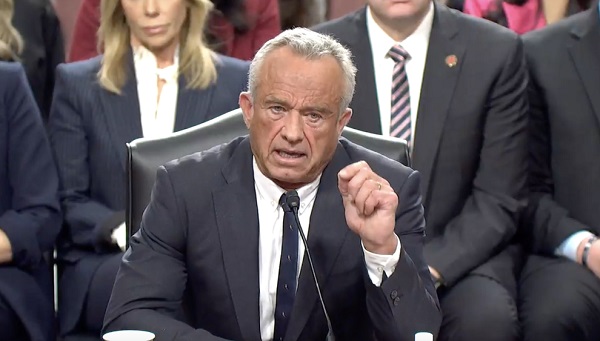Alberta
Albertans continue to pay for government debt—despite budget surpluses

From the Fraser Institute
By Tegan Hill
” due to the amount of debt accumulated, and higher interest rates, Albertans will actually see government debt interest costs increase and reach $687 per Albertan by 2025/26 “
Thanks in large part to a windfall in resource revenue, the Alberta government has been running budget surpluses since 2021/22. Yet at the same time, as budget season approaches, Albertans are paying more and more for the cost of government debt.
Prior to the recent string of surpluses, during a period of relatively low resource revenue, Alberta incurred nearly uninterrupted deficits from 2008/09 to 2020/21. A deficit is simply when the government spends more than it collects in revenue in a given year—and it leads to debt accumulation.
Indeed, Alberta went from a net financial asset position of $35.0 billion in 2007/08 to a net debt position of $59.5 billion in 2020/21. In other words, the province’s finances deteriorated by nearly $95 billion.
Of course, the burden of government debt ultimately falls on Alberta families, today and in the future, because governments must pay interest on their debt—and that interest ultimately is raised from Albertans through taxes. As the government accumulated more and more debt, debt interest costs increased from $61 per Albertan in 2007/08 to a projected $672 per Albertan in 2023/24. Servicing the debt also diverts resources away from services such as health care and education.
Unfortunately, debt interest costs don’t just disappear when you run surpluses, even with the Alberta government using a share of these surpluses to pay down debt. Instead, due to the amount of debt accumulated, and higher interest rates, Albertans will actually see government debt interest costs increase and reach $687 per Albertan by 2025/26.
This is why it’s so important for governments to practice fiscal prudence, in good times and bad. Rather than increasing spending during the good times (i.e. periods of relatively high resource revenue) as successive Alberta governments have done in the past, then running deficits when relatively high resource revenue inevitably declines, the Smith government should restrain spending.
How? For starters, the government can limit the amount of resource revenue included in the budget using a rainy-day account based on the previous Alberta Sustainability Fund (ASF), which was established in 2003 to “stabilize” a specific amount of resource revenue for the budget, thus limiting the amount of money available for annual spending. The idea was simple; save some resource revenue during good times to ensure a stable amount of resource revenue for the budget during bad times.
Unfortunately, the previous ASF was based in statutory law, which meant its rules were easily changed and the government discarded the fund entirely in 2013. The Smith government should instead establish the specific amount of resource revenue for the budget as a “constitutional rule,” which would make it more difficult to change in the future.
Government debt comes with big costs for Albertans—and those costs don’t simply disappear when the province runs a surplus. For true fiscal stability, the government needs a fundamentally new approach. The upcoming budget is a good place to start.
Author:
Alberta
Red Deer Justice Centre Grand Opening: Building access to justice for Albertans

The new Red Deer Justice Centre will help Albertans resolve their legal matters faster.
Albertans deserve to have access to a fair, accessible and transparent justice system. Modernizing Alberta’s courthouse infrastructure will help make sure Alberta’s justice system runs efficiently and meets the needs of the province’s growing population.
Alberta’s government has invested $191 million to build the new Red Deer Justice Centre, increasing the number of courtrooms from eight to 12, allowing more cases to be heard at one time.
“Modern, accessible courthouses and streamlined services not only strengthen our justice
system – they build safer, stronger communities across the province. Investing in the new Red Deer Justice Centre is vital to helping our justice system operate more efficiently, and will give people in Red Deer and across central Alberta better access to justice.”

Government of Alberta and Judiciary representatives with special guests at the Red Deer Justice Centre plaque unveiling event April 22, 2025.
On March 3, all court services in Red Deer began operating out of the new justice centre. The new justice centre has 12 courtrooms fully built and equipped with video-conference equipment to allow witnesses to attend remotely if they cannot travel, and vulnerable witnesses to testify from outside the courtroom.
The new justice centre also has spaces for people taking alternative approaches to the traditional courtroom trial process, with the three new suites for judicial dispute resolution services, a specific suite for other dispute resolution services, such as family mediation and civil mediation, and a new Indigenous courtroom with dedicated venting for smudging purposes.
“We are very excited about this new courthouse for central Alberta. Investing in the places where people seek justice shows respect for the rights of all Albertans. The Red Deer Justice Centre fills a significant infrastructure need for this rapidly growing part of the province. It is also an important symbol of the rule of law, meaning that none of us are above the law, and there is an independent judiciary to decide disputes. This is essential for a healthy functioning democracy.”
“Public safety and access to justice go hand in hand. With this investment in the new Red Deer Justice Centre, Alberta’s government is ensuring that communities are safer, legal matters are resolved more efficiently and all Albertans get the support they need.”
“This state-of-the-art facility will serve the people of Red Deer and surrounding communities for generations. Our team at Infrastructure is incredibly proud of the work done to plan, design and build this project. I want to thank everyone, at all levels, who helped make this project a reality.”
Budget 2025 is meeting the challenge faced by Alberta with continued investments in education and health, lower taxes for families and a focus on the economy.

Quick facts
- The new Red Deer Justice Centre is 312,000 sq ft (29,000 m2). (The old courthouse is 98,780 sq ft (9,177 m2)).
- The approved project funding for the Red Deer Justice Centre is about $191 million.
Alberta
Made in Alberta! Province makes it easier to support local products with Buy Local program

Show your Alberta side. Buy Local. |
When the going gets tough, Albertans stick together. That’s why Alberta’s government is launching a new campaign to benefit hard-working Albertans.
Global uncertainty is threatening the livelihoods of hard-working Alberta farmers, ranchers, processors and their families. The ‘Buy Local’ campaign, recently launched by Alberta’s government, encourages consumers to eat, drink and buy local to show our unified support for the province’s agriculture and food industry.
The government’s ‘Buy Local’ campaign encourages consumers to buy products from Alberta’s hard-working farmers, ranchers and food processors that produce safe, nutritious food for Albertans, Canadians and the world.
“It’s time to let these hard-working Albertans know we have their back. Now, more than ever, we need to shop local and buy made-in-Alberta products. The next time you are grocery shopping or go out for dinner or a drink with your friends or family, support local to demonstrate your Alberta pride. We are pleased tariffs don’t impact the ag industry right now and will keep advocating for our ag industry.”
Alberta’s government supports consumer choice. We are providing tools to help folks easily identify Alberta- and Canadian-made foods and products. Choosing local products keeps Albertans’ hard-earned dollars in our province. Whether it is farm-fresh vegetables, potatoes, honey, craft beer, frozen food or our world-renowned beef, Alberta has an abundance of fresh foods produced right on our doorstep.
Quick facts
- This summer, Albertans can support local at more than 150 farmers’ markets across the province and meet the folks who make, bake and grow our food.
- In March 2023, the Alberta government launched the ‘Made in Alberta’ voluntary food and beverage labelling program to support local agriculture and food sectors.
- Through direct connections with processors, the program has created the momentum to continue expanding consumer awareness about the ‘Made in Alberta’ label to help shoppers quickly identify foods and beverages produced in our province.
- Made in Alberta product catalogue website
Related information
-

 Business2 days ago
Business2 days agoTrump: China’s tariffs to “come down substantially” after negotiations with Xi
-

 2025 Federal Election2 days ago
2025 Federal Election2 days agoPolice Associations Endorse Conservatives. Poilievre Will Shut Down Tent Cities
-

 Business2 days ago
Business2 days agoTrump considers $5K bonus for moms to increase birthrate
-

 Business1 day ago
Business1 day agoChinese firm unveils palm-based biometric ID payments, sparking fresh privacy concerns
-

 2025 Federal Election2 days ago
2025 Federal Election2 days agoCanada’s press tries to turn the gender debate into a non-issue, pretend it’s not happening
-

 COVID-192 days ago
COVID-192 days agoRFK Jr. Launches Long-Awaited Offensive Against COVID-19 mRNA Shots
-

 2025 Federal Election2 days ago
2025 Federal Election2 days agoNext federal government should end corporate welfare for forced EV transition
-

 2025 Federal Election18 hours ago
2025 Federal Election18 hours agoCarney’s Hidden Climate Finance Agenda





